I'm excited to share this delicious homemade Agnolotti pasta recipe from Northern Italy. These agnolottis are like heaven on a plate.
These pasta parcels are extremely versatile and can be filled with various ingredients and served with a range of delicious sauces.
We stuffed ours with a cheese fondue, but this recipe can be easily adapted. You can use other fillings, including with meats and vegetables.

What is agnolotti pasta?
Agnolotti is a type of fresh pasta that is typically stuffed with meats, vegetables or cheese. This pasta originates from Piedmont in Northern Italy and is particularly traditional in the beautiful Langhe region.
What's the difference between agnolotti and agnolotti del plin?
Agnolotti del plin is a type of agnolotti pasta. Both types use the same pasta dough and fillings. The difference between the two is the technique used to make them.
Agnolotti pasta is filled squares very similar to ravioli, while Agnolotti del plin needs to be rolled and pinched, which gives each pasta parcel a unique shape.
Agnolotti del plin is also sometimes referred to as ravioli del plin or langaroli.

A little agnolotti history.
Piemontese ravioli is generally referred to locally as ‘agnolotti’. Like many other antique Italian recipes, there are various theories about how this stuffed pasta got its name.
One food legend has it that the word 'agnolotto' comes from the name of a cook, Angiolino or Angelot, who some believe invented it.
However, the well-known 19th century Savoy court chef, Giovanni Vialardi, believed the original word was 'agnellotto'. The Italian word for lamb is 'agnello' and, apparently, this pasta was originally stuffed with lamb.

A third and more modern theory is that the name comes from 'anulòt,' the local dialect word for the traditional iron utensil they used to cut the pasta.
This tool was ring-shaped because once upon a time agnolotti were traditionally round/circular. You can still find round agnolotti in Piemonte.
But, in general, this fresh pasta is mostly the same as ravioli. In its basic form, it's usually square or slightly rectangular. However, agnolotti del plin has a different shape.

What does agnolotti del ‘plin’ mean?
The word 'plin' translates to 'pinch' in the local Piemontese dialect (pizzico in standard Italian). It refers to the way these pasta parcels need to be 'pinched' in order to give them their shape.
Agnolotti del plin is normally pretty small, which makes it a little fiddly to make. The agnolotti del plin we made with a cheese filling is a little bigger, so each piece is easier to make.
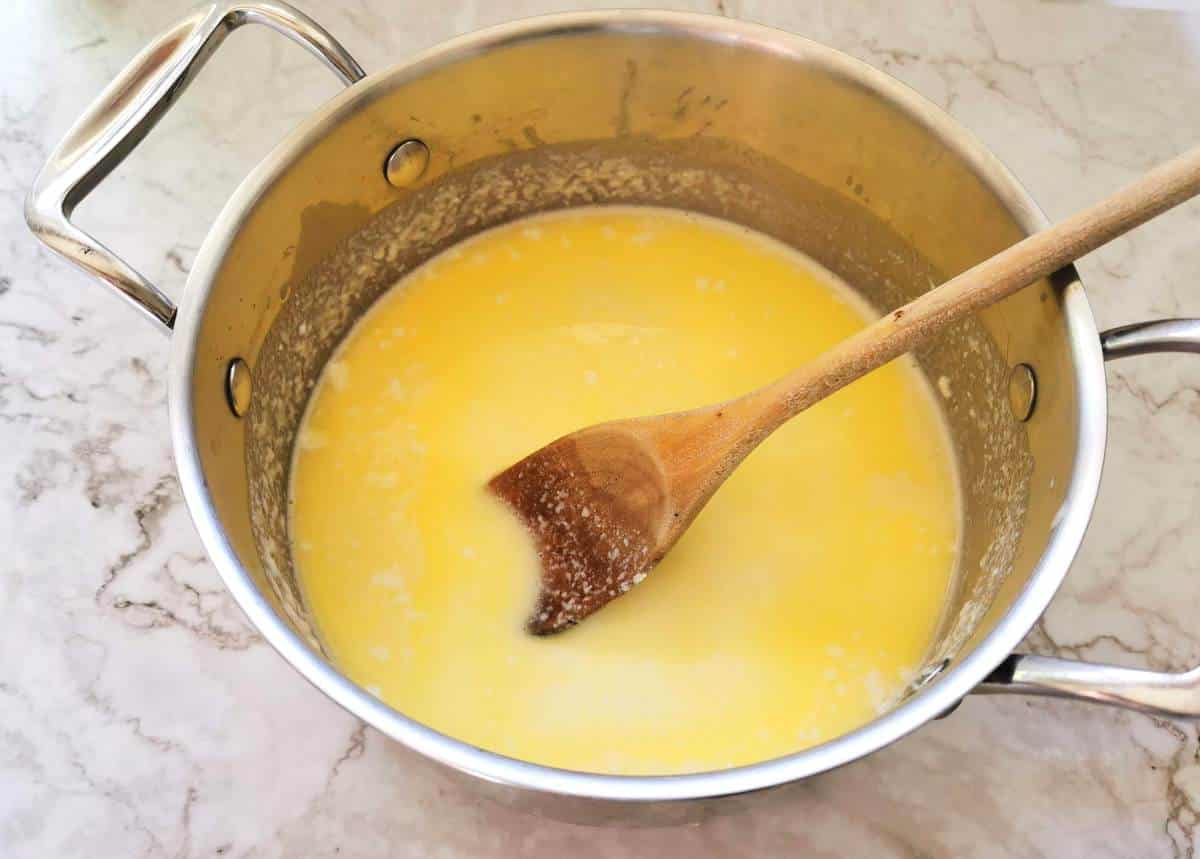
Different agnolotti fillings and recipes.
Meat filled agnolotti pasta is often eaten with the sauce from the braised meat they use to produce the filling. This is called 'brasato'.
It is actually the most time-consuming and laborious way to make agnolotti. But it's so delicious!
Some people make green ravioli del plin by adding spinach to the pasta dough. Others include spinach in the filling.
You can also find this pasta filled with the classic combo of spinach and ricotta.
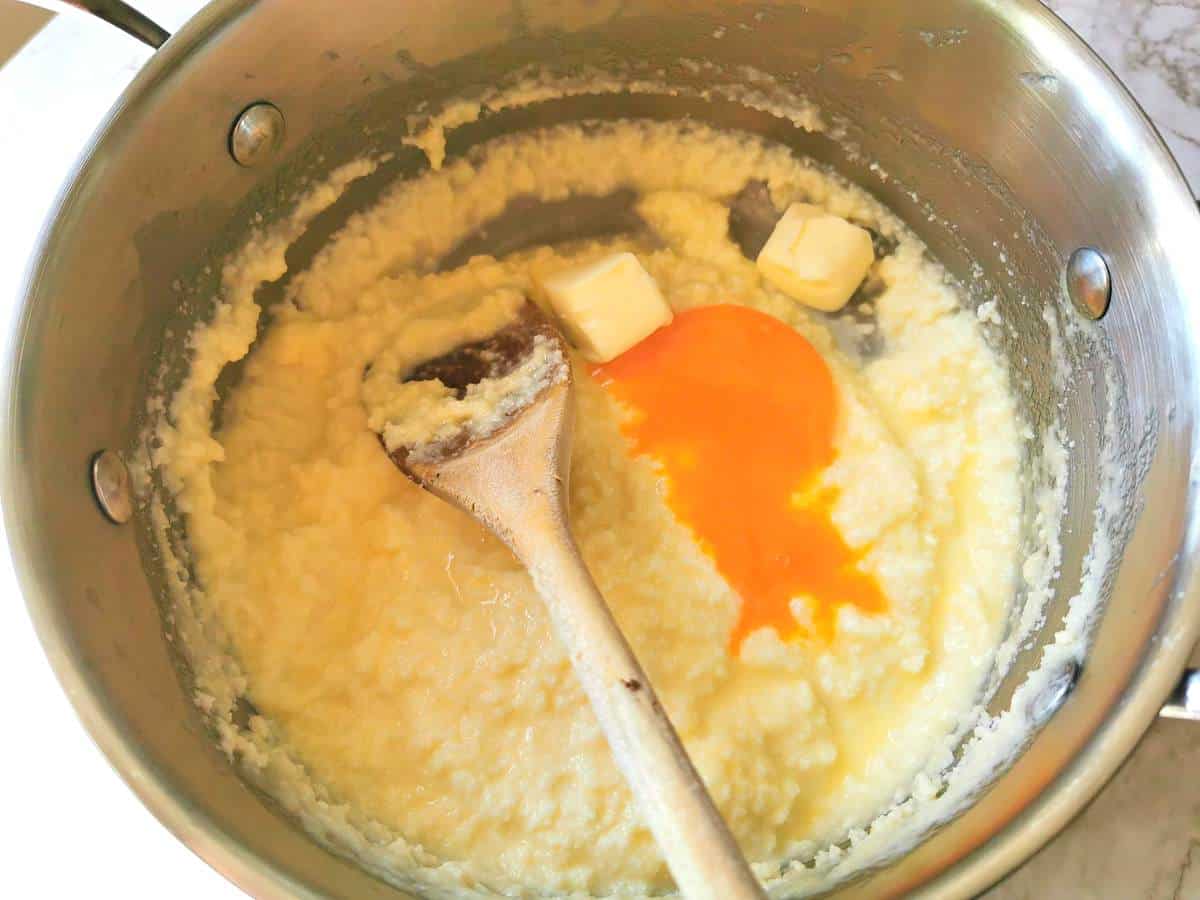
What's in this recipe.
For the filling for our homemade agnolotti pasta, we used cheese. We made a cheese fondue using Fontina cheese, butter, egg yolks and milk or cream.
We served our pasta with just butter and sage, as is traditionally done in Piemonte. But it's also common to serve agnolottis with truffle shavings, when truffles are in season. Definitely, on my to do list when I next have truffles!
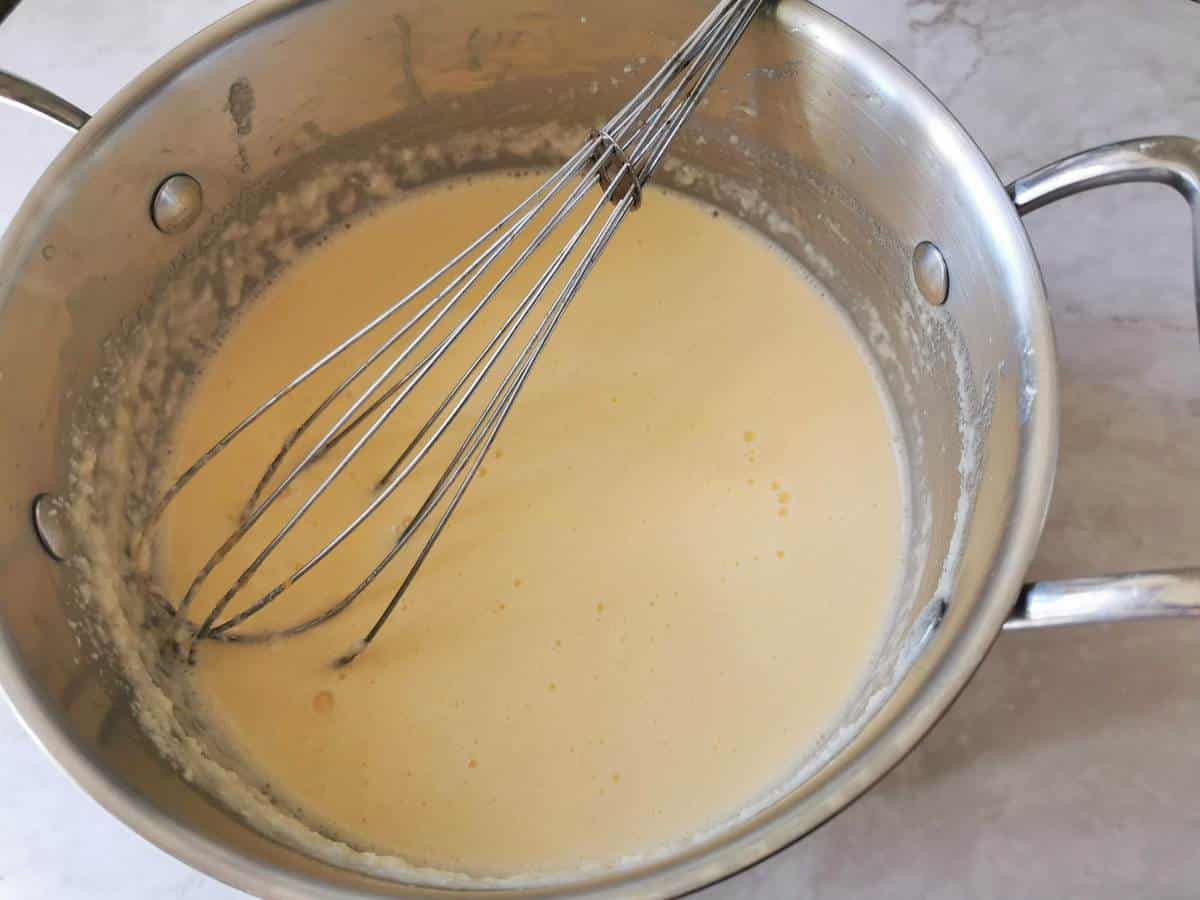
Making the cheese filling.
Italians call their fondue, fonduta and, unlike Swiss cheese fondue, it has butter and milk or cream in it.
The cheese filling we used for this agnolotti del plin recipe also has an egg yolk in it.
It's not difficult to make but needs to be refrigerated to cool and thicken before you use it to fill the pasta.
So, it's a good idea to make the cheese filling first and then move on to the pasta dough.
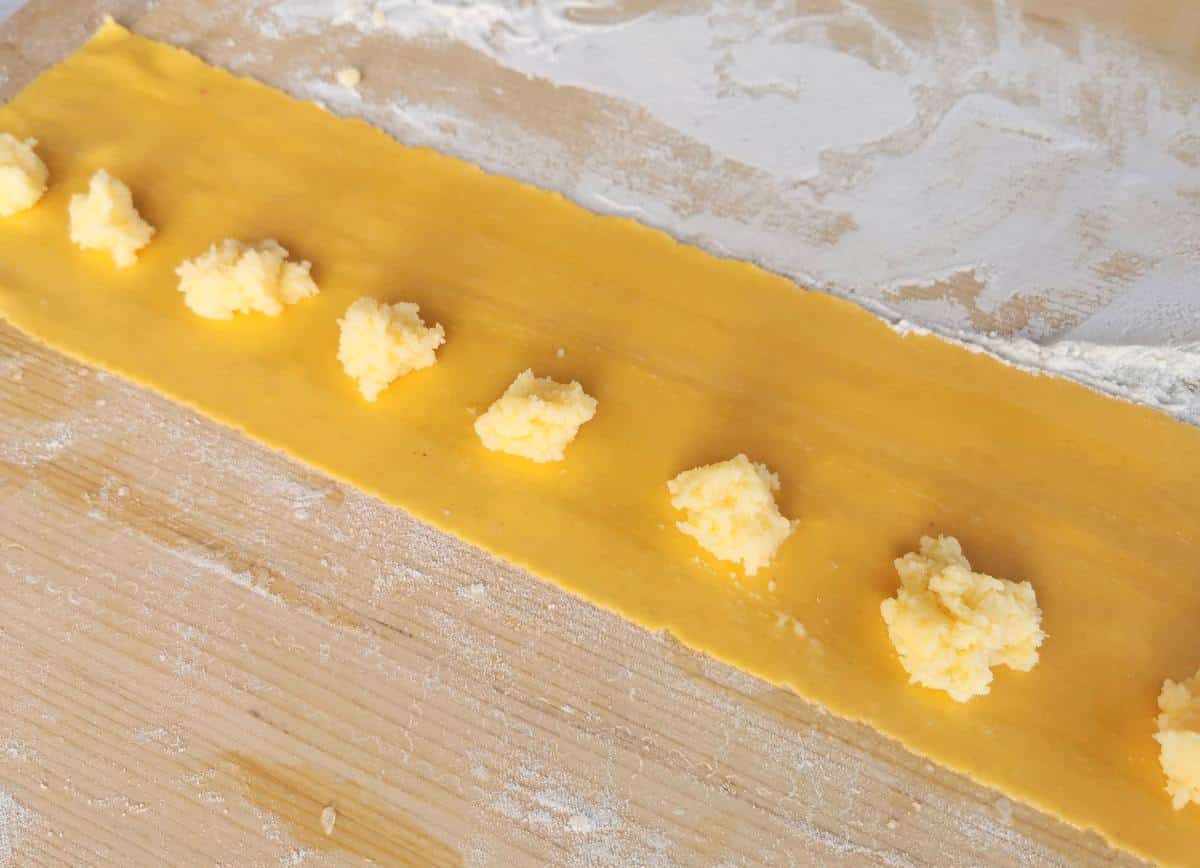
Making the pasta dough.
In Piemonte, agnolotti pasta dough's ingredients vary slightly from family to family. And, as I mentioned above, some people add spinach to the dough.
There are those who make the dough with a lot of eggs or egg yolks, whereas others use only one egg with extra water to make up the liquid.

Here in Italy, we can buy large eggs with orange yolks specifically for pasta making!
In Piemonte, they often make fresh pasta with only egg yolks instead of whole eggs. This gives the pasta a more golden color!

I used Italian 00 soft wheat flour, 3 large whole eggs and one egg yolk, and a little olive oil. Flour and eggs vary in different countries, so it's good to be flexible.
If your dough seems to dry, add a little warm water. If it's too wet, add some more flour.
But, don't forget, it takes time for the dough to come together (about 15 minutes), especially when kneading by hand.

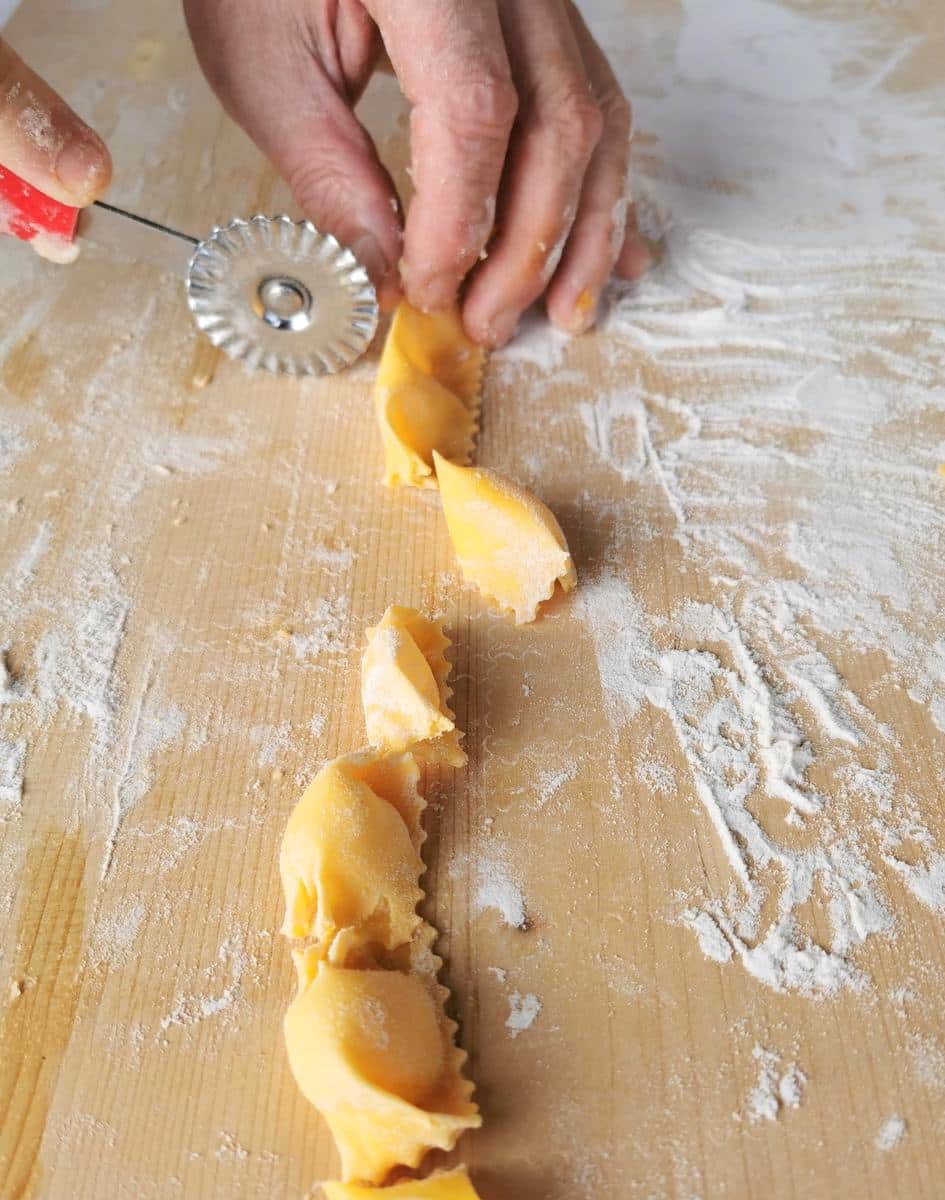
Serving your agnolotti del plin with a sauce.
We served our homemade agnolotti pasta with a simple butter and sage sauce, plus a sprinkling of Parmigiano cheese.
Although not traditional, I think this pasta would be good with a fresh tomato sauce too or served in a clear meat broth (which is traditional!).
Of course, if you have fresh truffles (particularly white), those would be a stunning and luxurious way to finish this dish.

Freezing and Leftovers.
Like most filled fresh pasta, it's not a good idea to make this cheese filled agnolotti del plin too far in advance. The pasta dough will start to get sticky because of the filling.
If you aren't going to cook the pasta within an hour or so, you can freeze the ready uncooked agnolotti and then cook from frozen.
I also like to make extra and freeze the leftover ones. That way I get two delicious meals with the work for one!

Whether you make and freeze or cook from fresh, I'm sure you'll love these delicate raviolis from Piemonte.
This is one of the most divine homemade ravioli recipes I have tried.
Italian pasta dishes can be both filling and hearty family meals but also a unique food experience. This recipe is definitely the latter!

If you do try this recipe, I'd love to hear what you think. Please write a comment here on the blog or post a comment on the Pasta Project Facebook page.
Your feedback means a lot to me!
Buon Appetito!
Other types of homemade pasta recipes:
- Baked fish ravioli from Liguria
- Sardinian ricotta ravioli with saffron
- Cjarsons, sweet ravioli from Friuli Venezia Giulia
- Pisconi Ascolani, baked ravioli from Le Marche
- Homemade Fried Rye Flour Ravioli
- Homemade Fagottini Pasta

SAVE THIS RECIPE FOR LATER?
If you want to save this recipe for later, you can print it, bookmark this page or save it to Pinterest.

If you are interested in learning how to make other homemade pasta and different types of gnocchi, check out my shop page for some great video online courses from my friends in Rome! Nothing beats learning to make pasta from Italians!
Plus while you’re there why not order a copy of one of my seasonal pasta recipe cookbooks? They make great presents for pasta lovers!
Want to know more about my life in Italy? Why not subscribe to my newsletter? New subscribers get a free recipe e-book too!
Pin for later.
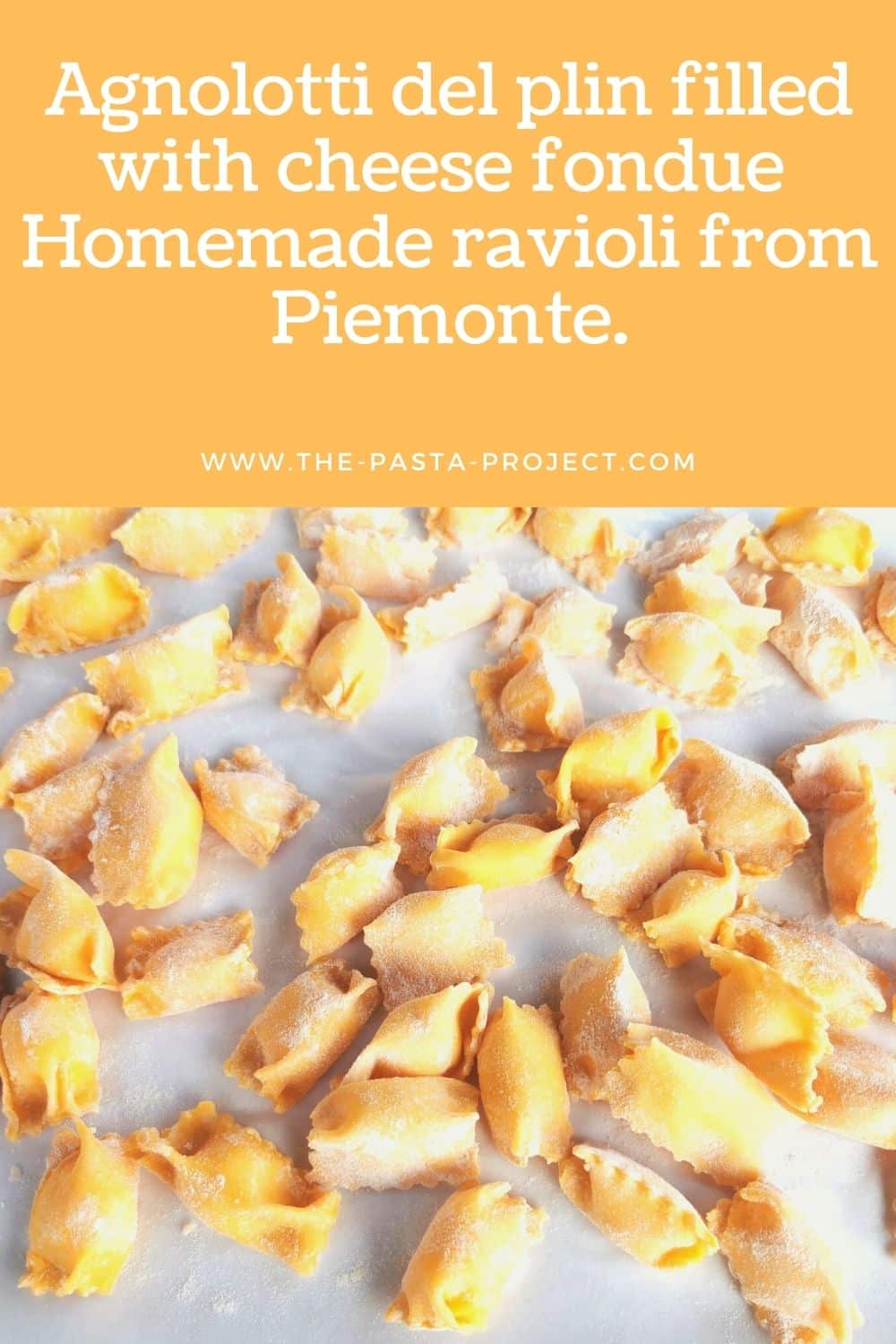
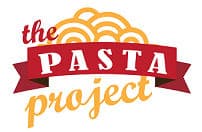



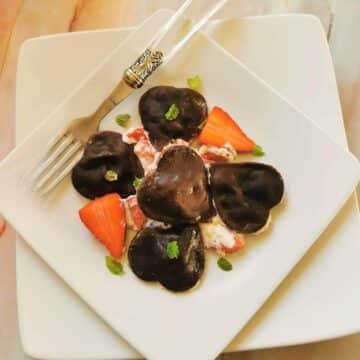
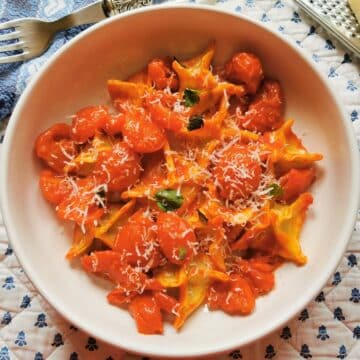

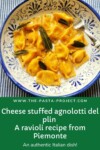
Valentina says
This is such an amazing recipe and I can't wait to try it out. Thanks for sharing!
Ramona says
This is a lovely dish and I am dying to try this out for me and my family! I love the whole combination of it and would love to try it out. Thank you for sharing this recipe!